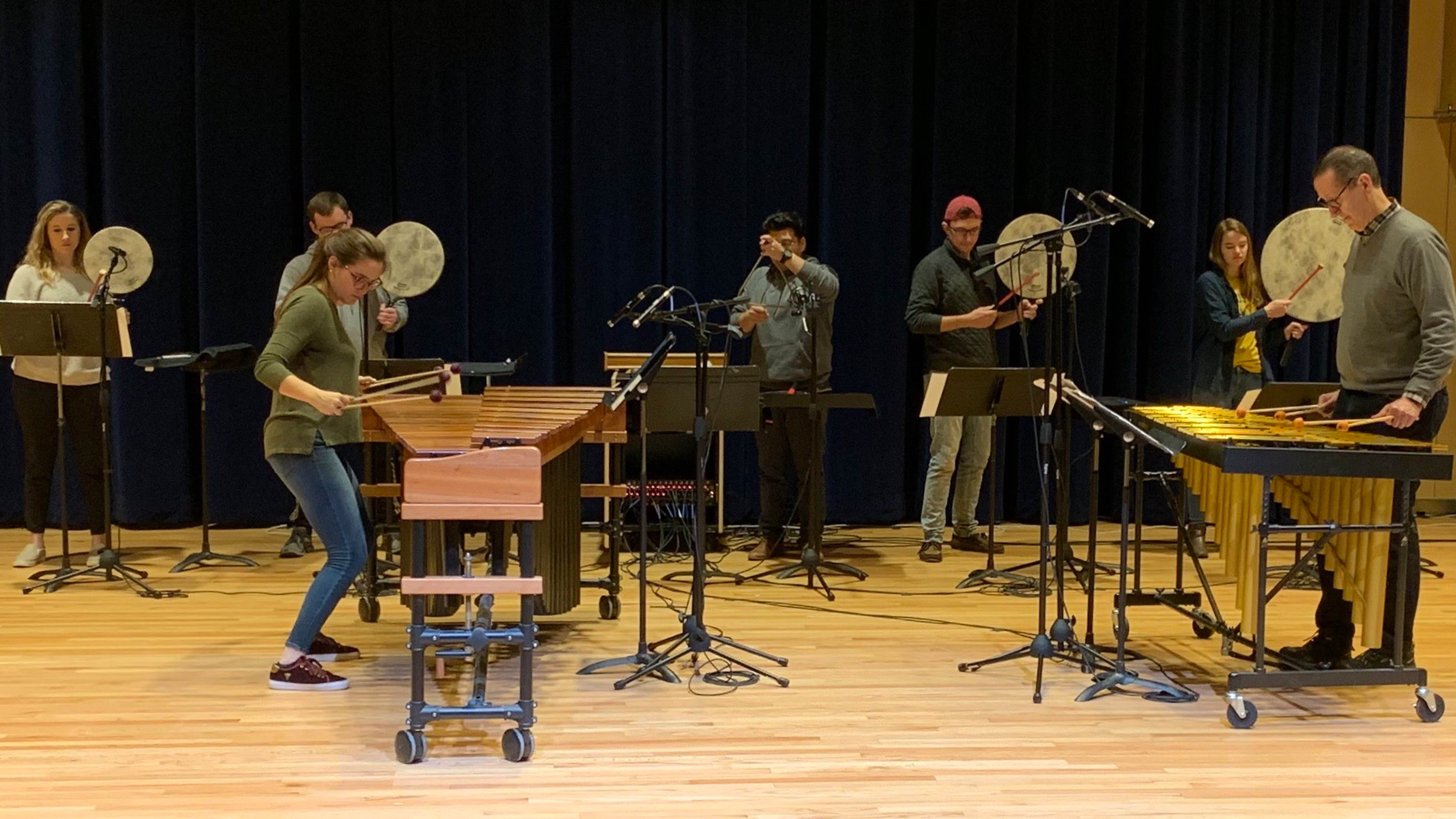Dana LeVan ‘20 says when she first came to Augustana she thought the Arthur Olsen Student Research Symposium was intended for science related research. But she later heard the call to participate when Augustana President Stephanie Herseth Sandlin and Provost and Executive Vice President Dr. Colin Irvine came to speak to music majors about wanting to see more research from them. The music education major also knows it’s important to make yourself as marketable as possible and part of that is learning to record music.
So in early 2019, LeVan approached Dr. Peter Folliard, expressing an interest in learning more about audio production. LeVan submitted an application and was the recipient of the 2019 Ralph and Susie Wagoner Student-Faculty Research Award, which allowed her to follow Folliard and learn from his work with Studio 47 all of last summer.
The Wagoners said one of the strengths of an Augustana educational experience is the opportunity for students to work hand-in-hand with an exceptional group of faculty.
"Dana jumped right in," said Folliard. "She is an ideal research assistant — learns quickly, asks questions and shows incredible ambition. Studio 47 couldn't have undertaken all of the projects it has without Dana's assistance."
In just one year, LeVan has worked in the full spectrum of professional recording. She has gained experience in audio engineering, microphone selection and placement, advanced signal flow, recording session management, post-production techniques, as well as the marketing and business sides of the operation to make Studio 47 a revenue generating component of Augustana.
“His (Folliard’s) time is worth so much. I appreciate that he’s so helpful and encouraging towards me because he knows what it’s like to be at the same point I am at in my education,” said LeVan.
The Research
Through her experience learning from Folliard, LeVan was ready to take on a project of her own, which she’ll be presenting at the symposium on April 30-May 1. She’ll be participating with a video presentation (available after her presentation goes live) that will be shown virtually this year as a result of COVID-19. In the video, she’ll explore a recording she has edited of a percussion piece based off of Lakota chant called “Four Directions.” The piece was written by Percussion Instructor Dr. John Pennington and was premiered by the Augustana Professional Ensemble in China about a year ago.
 “We listen to music all the time, but we don’t really sit and think about all of the different sounds we’re listening to and all the thought that goes into each specific sound,” said LeVan.
“We listen to music all the time, but we don’t really sit and think about all of the different sounds we’re listening to and all the thought that goes into each specific sound,” said LeVan.
LeVan says she worked with the composer to find out what he wanted others to hear in the recording. She articulates how the way people and equipment are placed in a room can create different sounds.
“When you perform a piece on a stage, it’s a performing art and you won’t hear it the same way every time, but when you’re preserving something like a recording it is like a painting; it will be the same every time,” LeVan said. “Somebody has put a lot of thought into the specifics of how you are going to hear the music. It’s crazy that someone can control your perception that much.”
LeVan says what’s really exciting about her presentation is you can leave the symposium and listen to the piece as much as you want and you’ll know the work that went into it.
What’s Lies Ahead for LeVan
If not disrupted by COVID-19, LeVan plans to student-teach in the fall and will begin auditioning for graduate schools for percussion performance. She hopes to someday become a military musician and later start music programs in underserved communities.
Participate in the Virtual Arthur Olsen Research Symposium
Join the 2020 Arthur Olsen Student Research Symposium (login required) or visit augie.edu/symposium for more information.
The virtual symposium opens at 8 a.m. CST, Thursday, April 30, but sessions begin opening at 10 a.m. The sessions become available at staggered times on Thursday, April 30, and Friday, May 1, to enable real-time interaction with the presenters. The final presentation opens at 3:30 p.m. CST, Friday, May 1.
Once the symposium opens and you log in, you will find a virtual "program" with links to the presentations and the times when they become available. Clicking a link in the program will take you to the recorded presentation, a live chat with the presenters (open for a limited time approximately 15 minutes after the session becomes available) and a place to leave feedback for the presenters (which will be open for the remainder of the symposium).
The virtual symposium will close midnight, Sunday, May 3.
